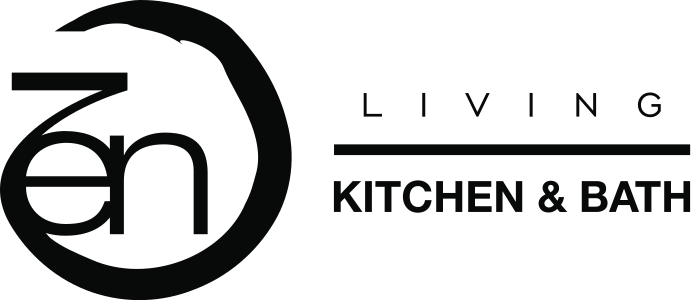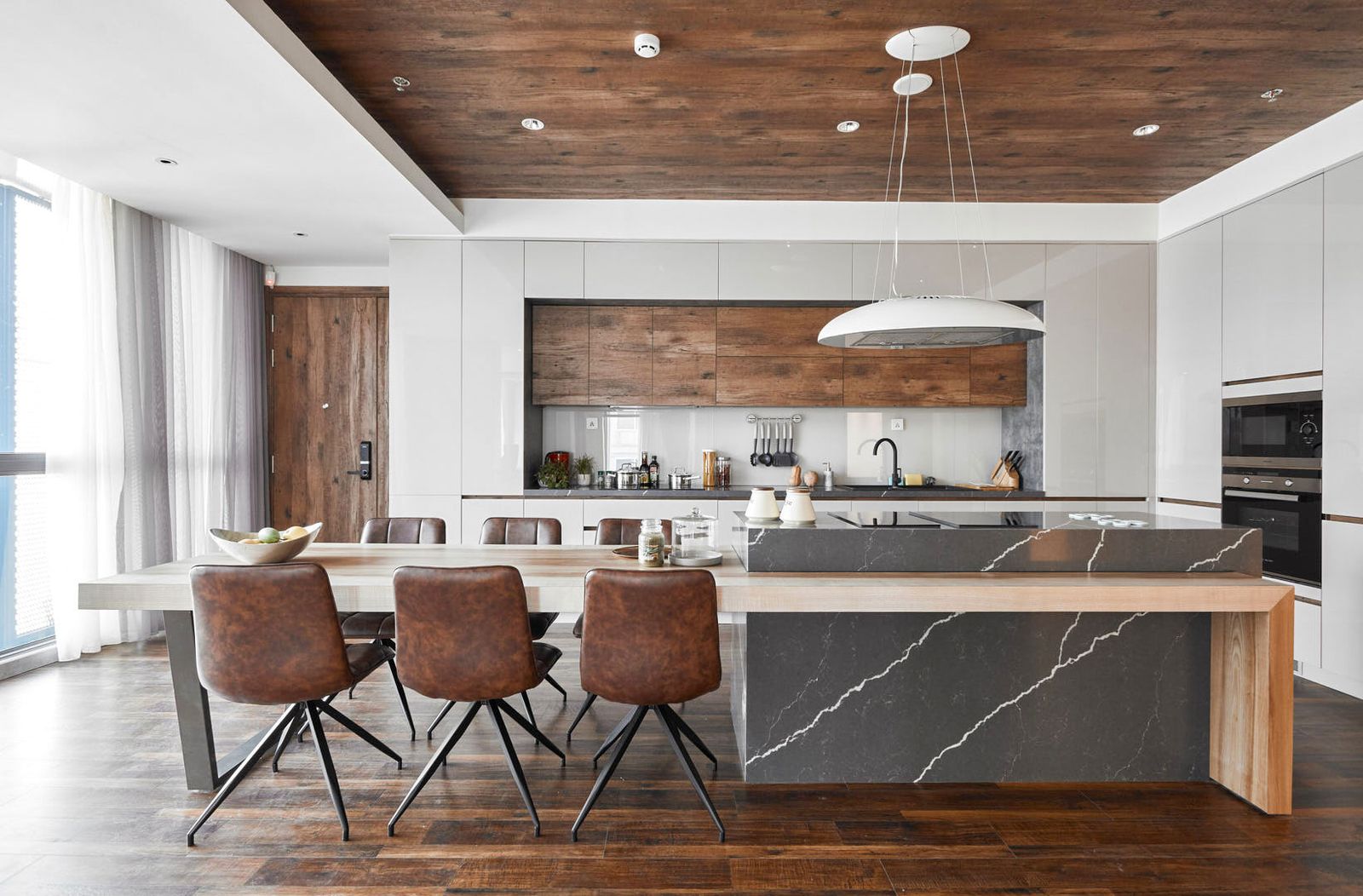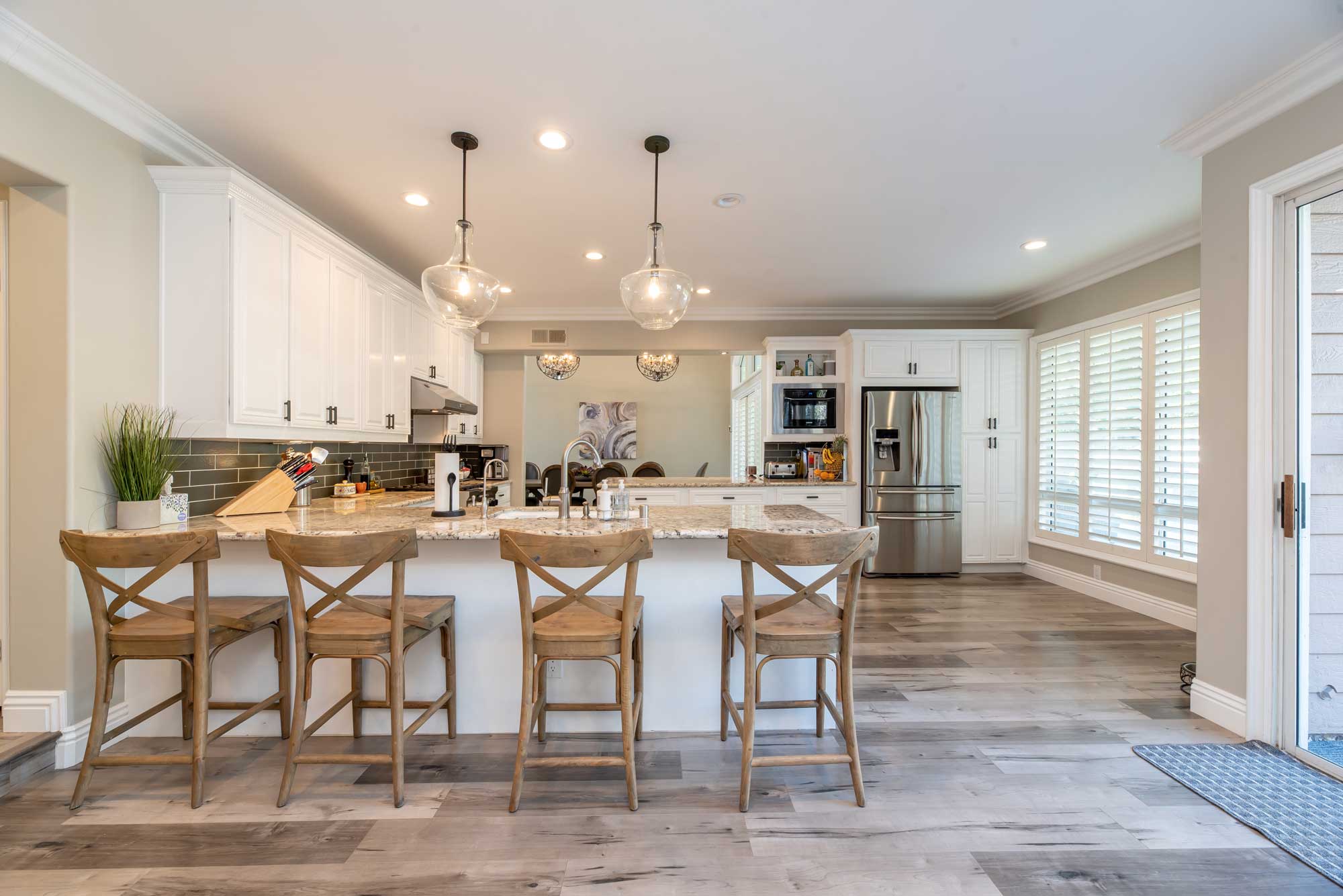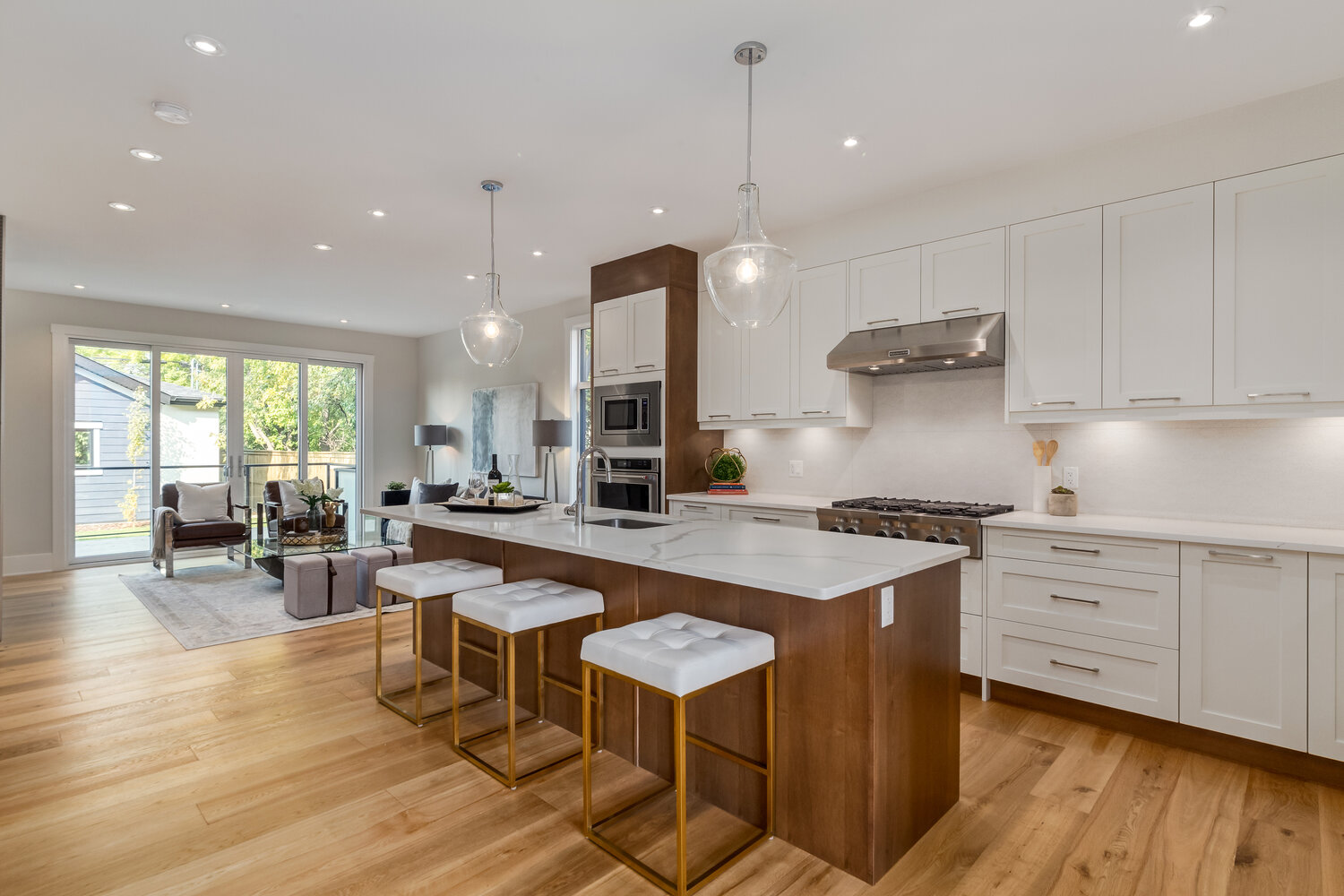Whether you have a small closet in a cozy apartment or a walk-in closet in a spacious home, this guide will provide you with valuable insights, practical tips, and actionable steps to transform your closet into a well-utilized and clutter-free haven. Say goodbye to chaotic mornings and rediscover the joy of a perfectly organized wardrobe as we delve into the world of closet organizers. Get ready to unlock the potential of your closet and take control of your storage space like never before!
Benefits of a Closet Organizer
1. Maximizing Space
A closet organizer allows you to optimize the available space in your closets. By utilizing various storage solutions such as shelves, drawers, hanging rods, and compartments, you can effectively arrange your clothing, shoes, accessories, and other items in a way that maximizes every inch of your closet. This not only increases the storage capacity but also creates a more organized and tidier environment.
2. Easy Access to Clothing and Accessories
With a closet organizer, finding your favorite outfit or accessory becomes a breeze. By categorizing and arranging your items in a systematic manner, you can easily locate and retrieve them whenever needed. No more digging through piles of clothes or struggling to find a matching pair of shoes. A well-designed closet organizer ensures that everything has its designated place, making your daily routine more efficient and stress-free.
3. Reducing Clutter and Stress
A cluttered and disorganized closet can create unnecessary stress and frustration in your life. It can lead to wasted time searching for items, damaging or misplacing belongings, and feeling overwhelmed by the chaos. A closet organizer helps you declutter and streamline your belongings, providing a sense of calm and order. By eliminating unnecessary items and implementing effective organization strategies, you can create a serene and peaceful space that promotes a positive mindset.
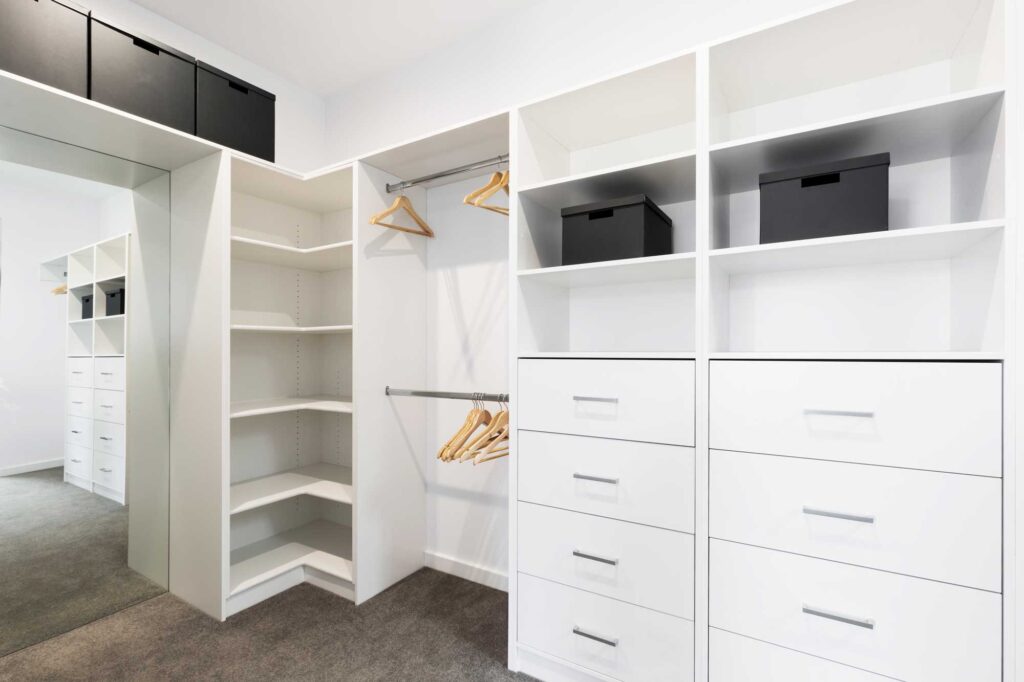
Types of Closet Organizers
1. Wire Shelving
Wire shelving is a popular and affordable option for closet organization. It consists of metal wire grids or shelves that are supported by brackets or a wall-mounted system. Wire shelving allows for good airflow and visibility, making it easy to spot and access your belongings. It is versatile, adjustable, and suitable for various closet sizes and layouts.
2. Wooden Shelving
Wooden shelving provides a more elegant and sophisticated look to your closet. It is sturdy, durable, and capable of supporting heavier items. Wooden shelves can be customized to fit your specific needs and can include features like drawers, hanging rods, and shoe racks. They offer a timeless appeal and can complement different interior styles.
3. Custom Built-in Units
For those seeking the ultimate in personalized closet organization, custom built-in units are the ideal choice. These organizers are designed and constructed according to your exact specifications and preferences. Custom units can maximize the use of every nook and cranny in your closet, utilizing specialized storage solutions such as pull-out racks, rotating shoe carousels, and built-in jewelry trays. While custom built-in units tend to be more expensive, they provide the highest level of customization and functionality. Choosing the right type of closet organizer depends on factors such as your budget, aesthetic preferences, and the specific needs of your wardrobe. Consider the pros and cons of each option and evaluate how well they align with your storage requirements and style preferences. Ultimately, the goal is to select a closet organizer that not only enhances the organization of your space but also complements the overall design of your home.
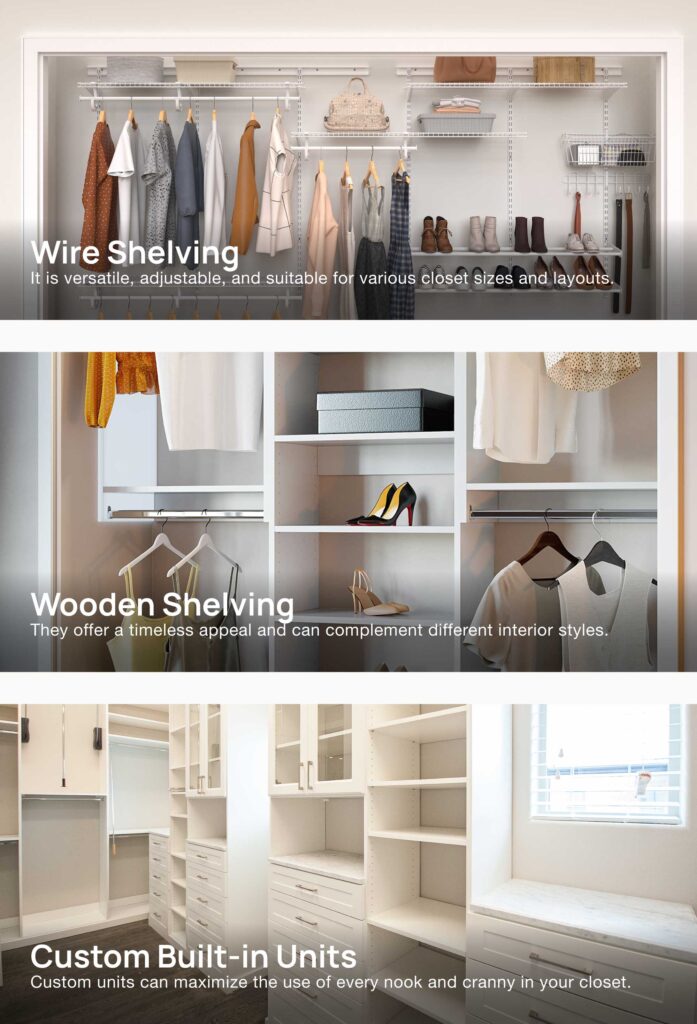
Factors to Consider Before Choosing a Closet Organizer
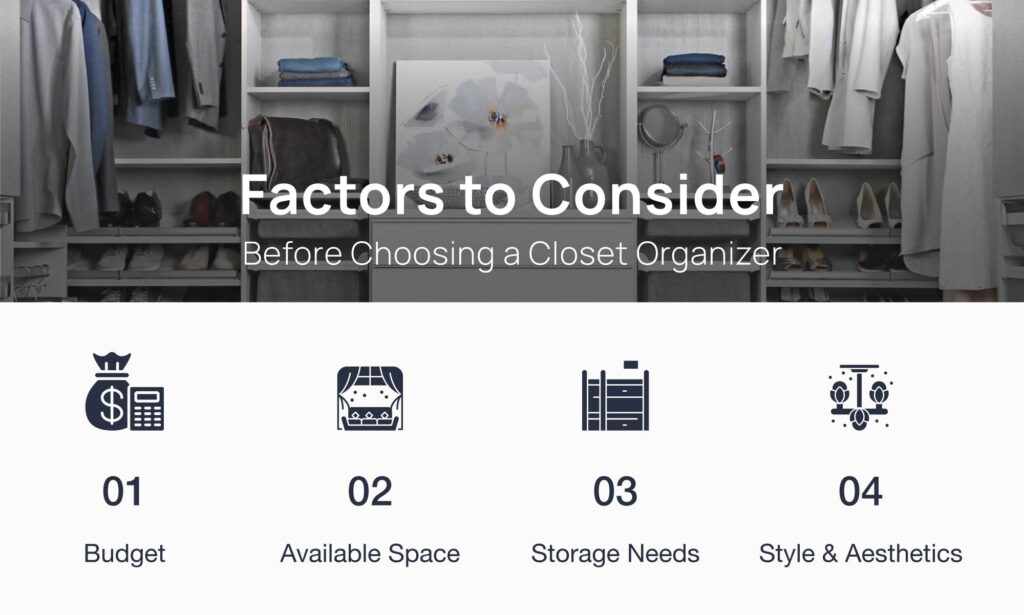
1. Budget
Before selecting a closet organizer, it’s essential to determine your budget. Closet organizers come in a range of prices, from affordable options like wire shelving to more expensive custom-built units. Consider your budgetary constraints and explore options that fit within your financial plan.
2. Available Space
Assess the available space in your closet before choosing an organizer. Measure the dimensions of your closet, including height, width, and depth, to ensure that the organizer you select fits properly. Consider any obstructions, such as doors or windows, that may impact the installation and functionality of the organizer.
3. Storage Needs
Evaluate your storage needs and the specific items you intend to store in your closet. Do you have a large shoe collection, extensive hanging garments, or a need for additional drawer space? Understanding your storage requirements will help you choose an organizer that offers the right combination of shelves, drawers, hanging rods, and other features to accommodate your belongings.
4. Style and Aesthetics
Consider the style and aesthetics of the closet organizer to ensure it complements your overall interior design. Closet organizers are available in various materials, finishes, and designs. Whether you prefer a modern, minimalist look or a more traditional and elegant style, choose an organizer that aligns with your personal taste and enhances the visual appeal of your space. By considering these factors—budget, available space, storage needs, and style—you can make an informed decision when selecting a closet organizer that meets your requirements and helps you achieve a well-organized and visually appealing closet space.
DIY vs. Professional Installation
1. Benefits and Drawbacks of DIY Installation
DIY installation of a closet organizer can be an attractive option for those who enjoy hands-on projects and want to save money on installation costs. Some benefits of DIY installation include:
- Cost Savings: DIY installation eliminates the expense of hiring a professional installer, allowing you to allocate your budget towards the organizer itself.
- Flexibility and Customization: With a DIY approach, you have the freedom to customize the installation based on your specific needs and preferences.
- Learning Experience: Taking on a DIY project provides an opportunity to learn new skills and gain a sense of accomplishment.
However, it’s important to consider the drawbacks of DIY installation, which can include:
- Time and Effort: Installing a closet organizer requires time, effort, and a certain level of expertise. It may involve tasks such as measuring, cutting, drilling, and assembling, which can be time-consuming and physically demanding.
- Skill and Knowledge: DIY installation requires a certain level of skill and knowledge to ensure proper installation and functionality. Mistakes or improper installation can lead to a less effective and durable closet organizer.
- Limited Warranty: Some closet organizer manufacturers may require professional installation to validate the warranty. DIY installation may void any warranty coverage, leaving you responsible for any future repairs or replacements.
2. Benefits and Drawbacks of Professional Installation
Professional installation offers several benefits that can make the process smoother and more efficient. Here are some advantages of opting for professional installation:
- Expertise and Experience: Professional installers have the necessary skills, knowledge, and experience to ensure a precise and high-quality installation. They are familiar with different types of closet organizers and can handle any challenges that may arise.
- Time-Saving: Hiring professionals allows you to save time and effort by leaving the installation in their capable hands. They can complete the job efficiently, allowing you to enjoy your newly organized closet sooner.
- Warranty Coverage: Professional installation often comes with warranty coverage. If any issues arise with the installation or the organizer itself, you can rely on the warranty for necessary repairs or replacements.
However, there are a few drawbacks to consider when opting for professional installation:
- Custom Closet Cost: Professional installation typically incurs additional costs compared to DIY installation. You need to account for the installer’s fees in your budget for the project.
- Limited Customization: While professional installers can provide expert guidance, customization options may be limited compared to a DIY approach. They may follow a standard installation process without accommodating specific customization requests.
When deciding between DIY and professional installation, consider your skill level, available time, budget, and desired level of customization. Assessing these factors will help you make an informed decision that ensures a successful and satisfying closet organizer installation.
Maintaining and Cleaning Your Closet Organizer
Tips for Keeping Your Closet Organizer Clean and Tidy
To ensure the longevity and functionality of your closet organizer, it’s important to establish a regular maintenance routine. Here are some helpful tips for keeping your closet organizer clean and tidy:
- Regular Decluttering: Take the time to regularly declutter your closet and remove any items that you no longer need or use. This will prevent overcrowding and maintain a clutter-free space.
- Wipe Down Surfaces: Clean the surfaces of your closet organizer regularly using a damp cloth or mild cleaning solution. This will help remove dust, dirt, and any spills or stains that may have occurred.
- Vacuum or Sweep the Floor: If your closet has a floor, make sure to vacuum or sweep it regularly to remove any dust or debris that may have accumulated.
- Organize and Arrange Items: Keep your belongings organized within the closet organizer by grouping similar items together and utilizing storage accessories such as bins, dividers, and hooks. This will help maintain a neat and organized appearance.
- Avoid Overloading Shelves and Rods: Be mindful of the weight capacity of your closet organizer and avoid overloading shelves and rods. Distribute the weight evenly to prevent sagging or damage to the organizer.
How to Deal with Common Closet Organizer Issues
Despite proper maintenance, certain issues may arise with your closet organizer. Here are some common issues and how to address them:
- Sticking Drawers or Doors: If drawers or doors are sticking or not opening smoothly, check for any obstructions or misalignment. Adjust the tracks or hinges as needed and ensure that the organizer is installed correctly.
- Sagging Shelves or Rods: If shelves or rods are sagging under the weight of items, reinforce them by adding additional supports or brackets. Alternatively, consider redistributing items to different sections of the organizer.
- Mold or Mildew: If your closet organizer is exposed to excessive moisture, it may be susceptible to mold or mildew growth. Address this issue promptly by ensuring proper ventilation, removing any damp items, and using mold-resistant materials in your organizer.
- Loose or Damaged Hardware: Inspect the hardware of your closet organizer regularly and tighten any loose screws or bolts. Replace any damaged or broken hardware to maintain the structural integrity of the organizer.
By following these maintenance tips and addressing common issues promptly, you can keep your closet organizer in excellent condition and enjoy its benefits for years to come.
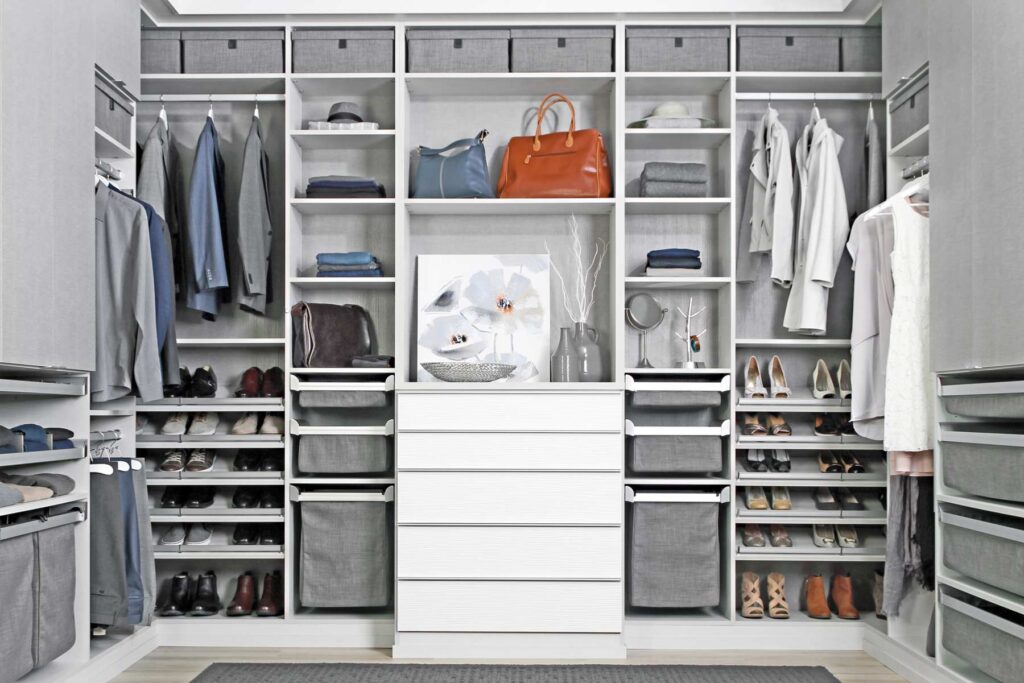
Conclusion
In conclusion, a well-designed and properly installed closet organizer can greatly enhance the functionality and organization of your closet space. By maximizing space utilization, providing easy access to clothing and accessories, and reducing clutter and stress, a closet organizer becomes an essential addition to any home.
When considering a closet organizer, carefully evaluate factors such as available space, storage needs, budget, and personal style. Choose the appropriate type of organizer, whether it be wire shelving, wooden shelving, or custom-built units, to suit your requirements. Deciding between DIY installation and professional installation depends on your skill level, time availability, and desired customization options. While DIY installation can offer cost savings and customization flexibility, professional installation ensures expertise, time efficiency, and warranty coverage. Maintaining and cleaning your closet organizer is crucial to its longevity. Regular decluttering, surface cleaning, and organizing of items will keep your closet tidy. Additionally, addressing common issues like sticking drawers, sagging shelves, mold or mildew, and loose hardware will help maintain the functionality and appearance of your organizer.
By following these guidelines and investing in a quality closet organizer, you can transform your closet into a well-organized space that simplifies your daily routine and brings harmony to your home
To book a free design consultation, you can submit your inquiry or call (587) 840-7934. Zen Living Kitchen & Bath is a leading Calgary cabinet manufacturer and supplier, offering top-quality products and exceptional service. With over 50+ years of experience in cabinetry and design, we are dedicated to delivering the highest quality to our customers.

